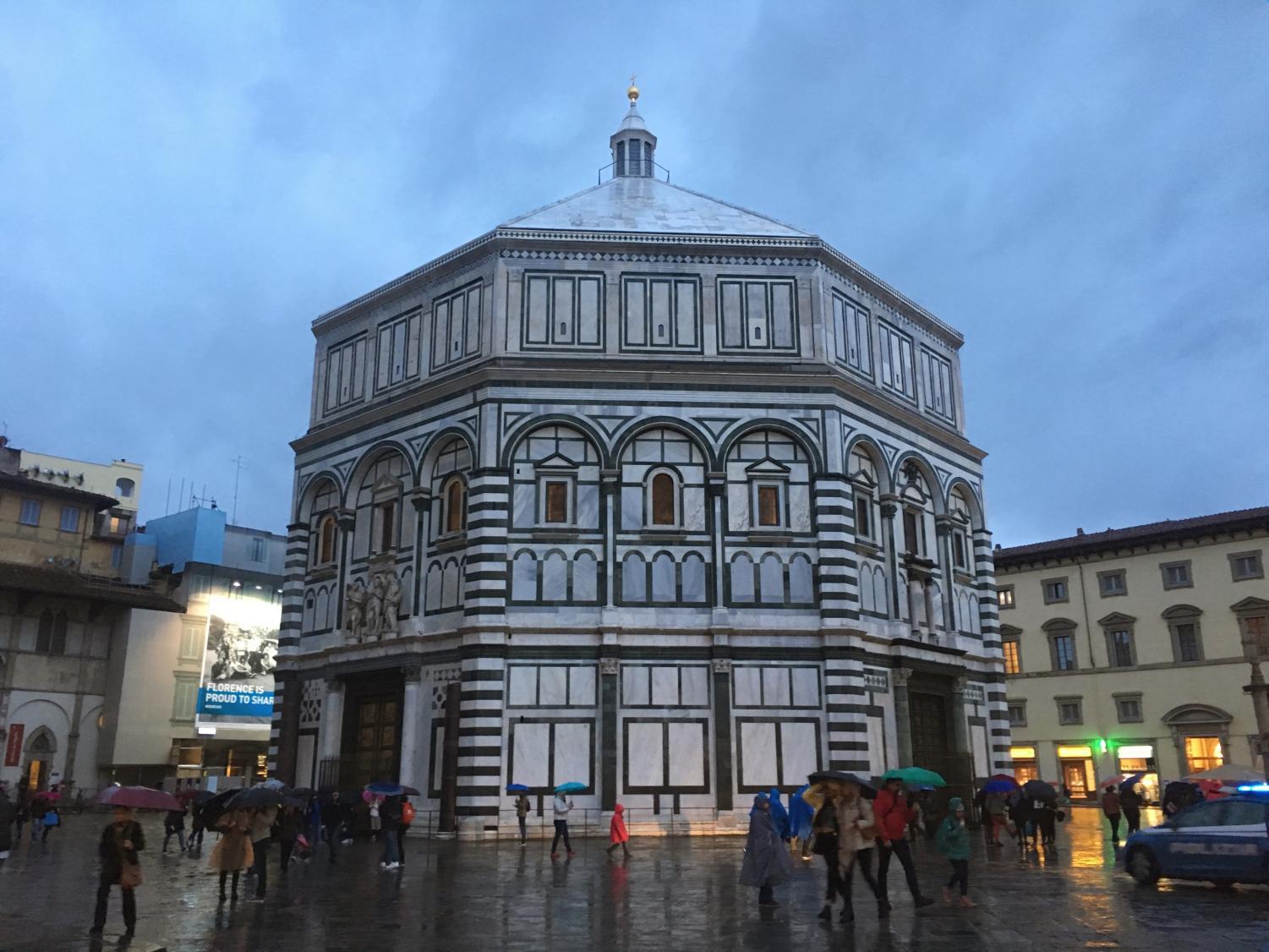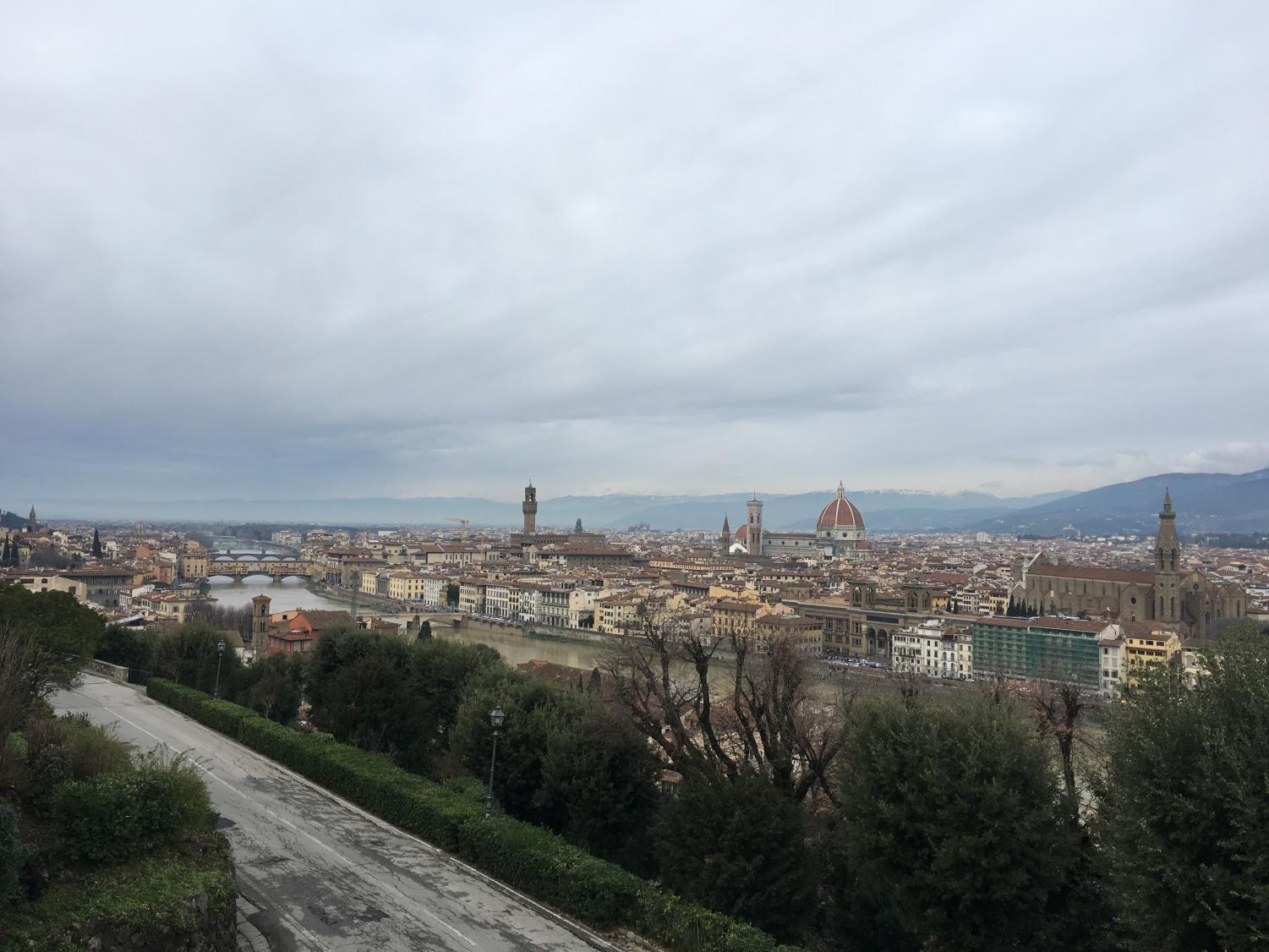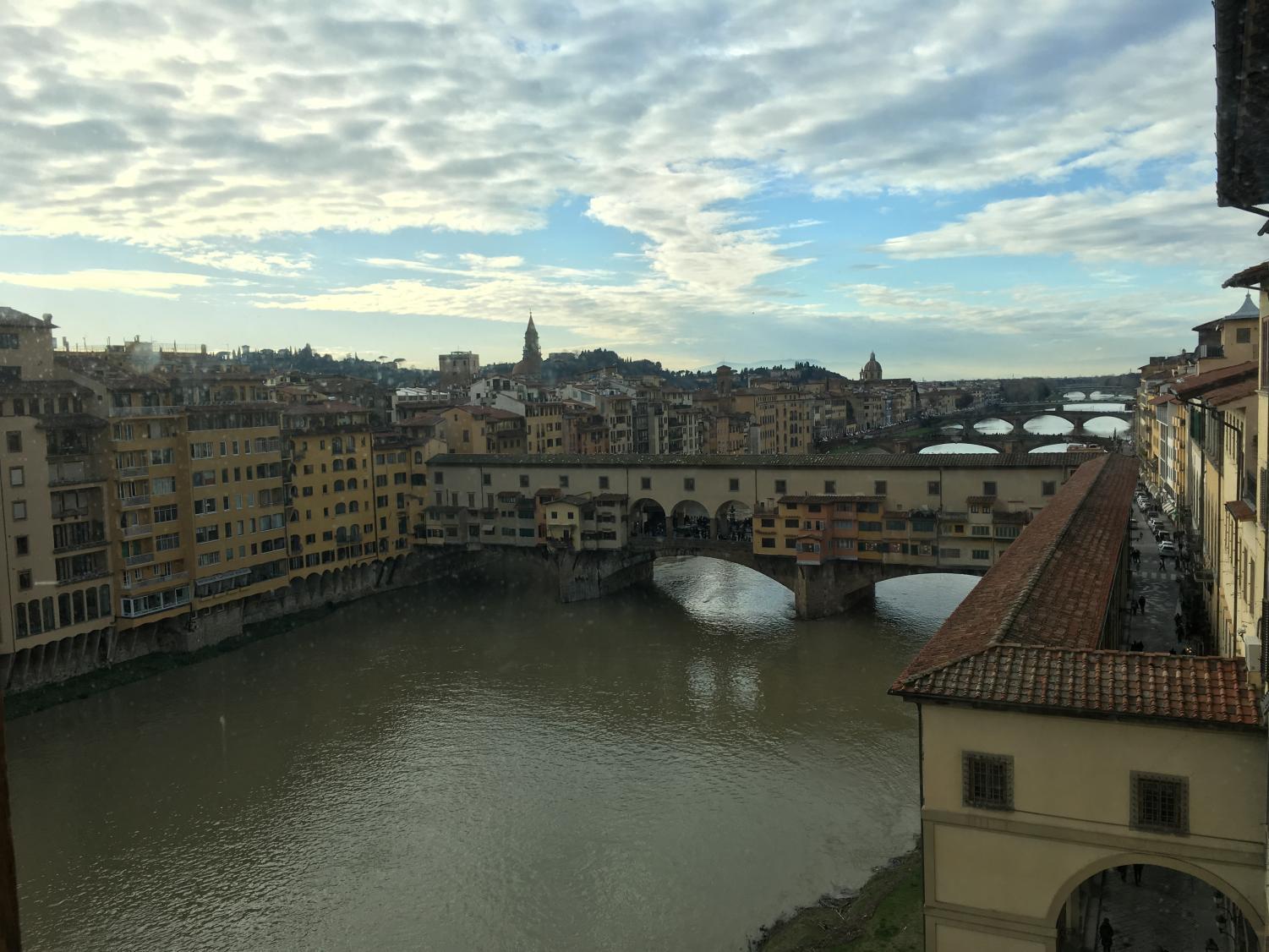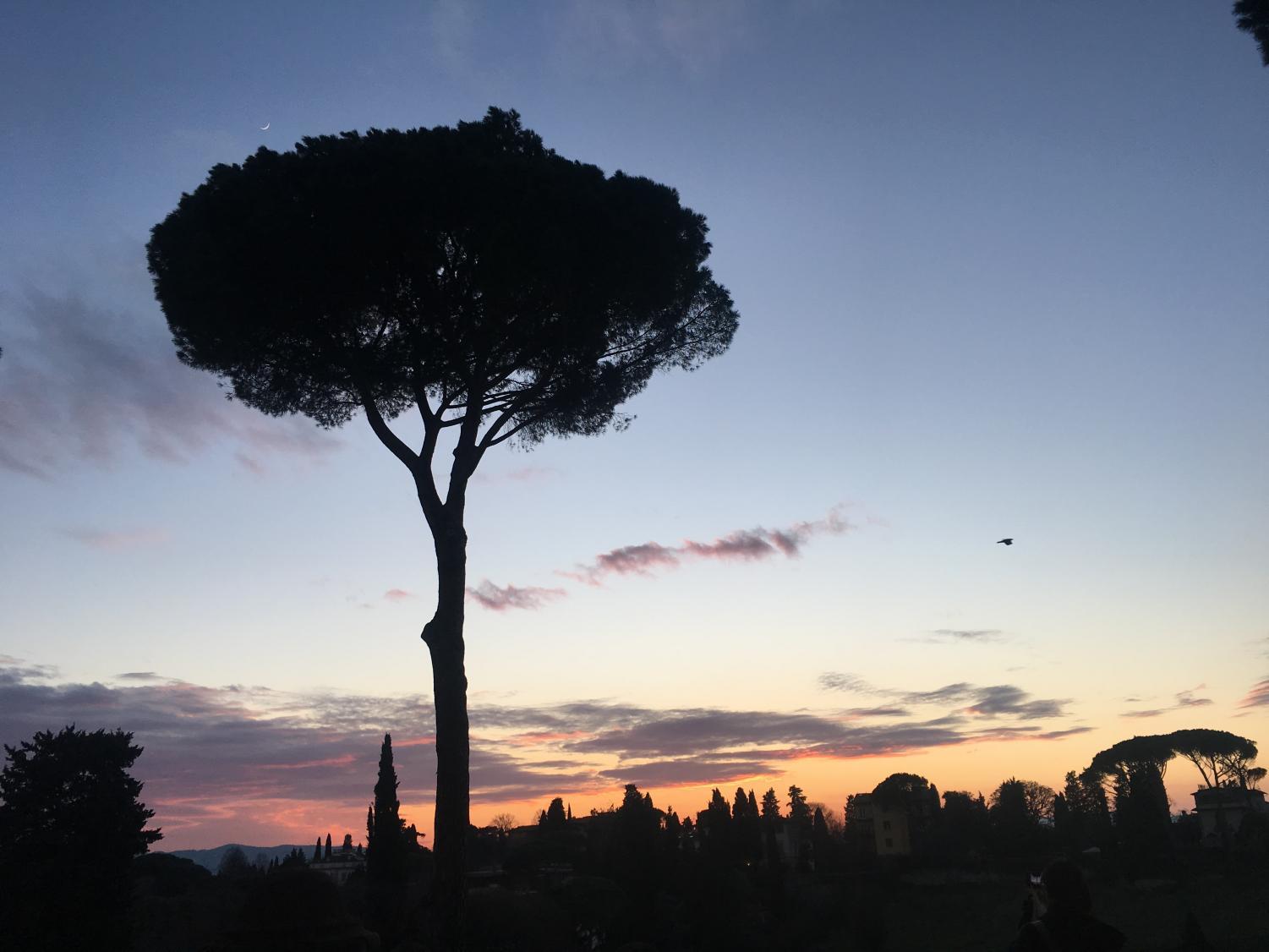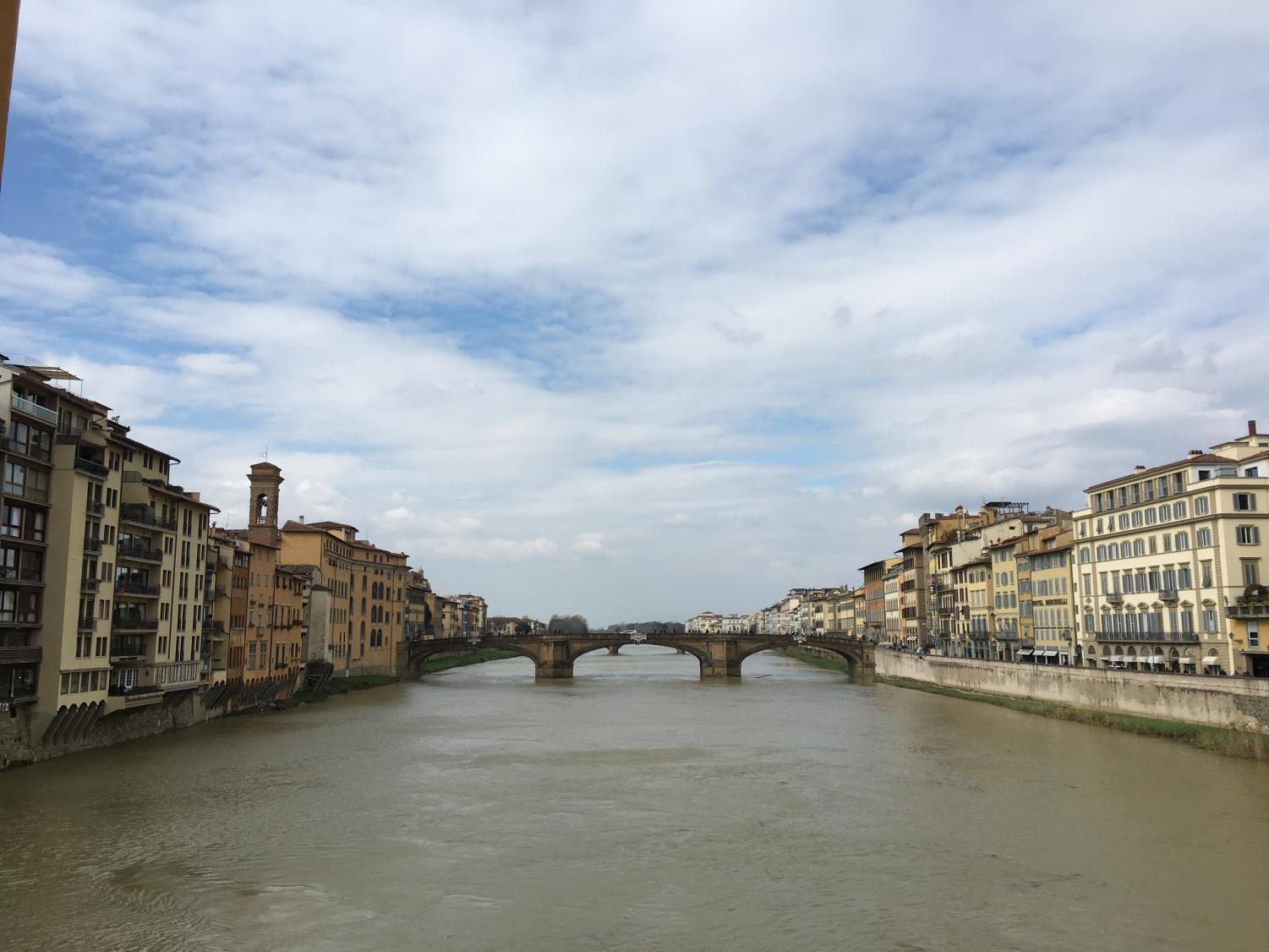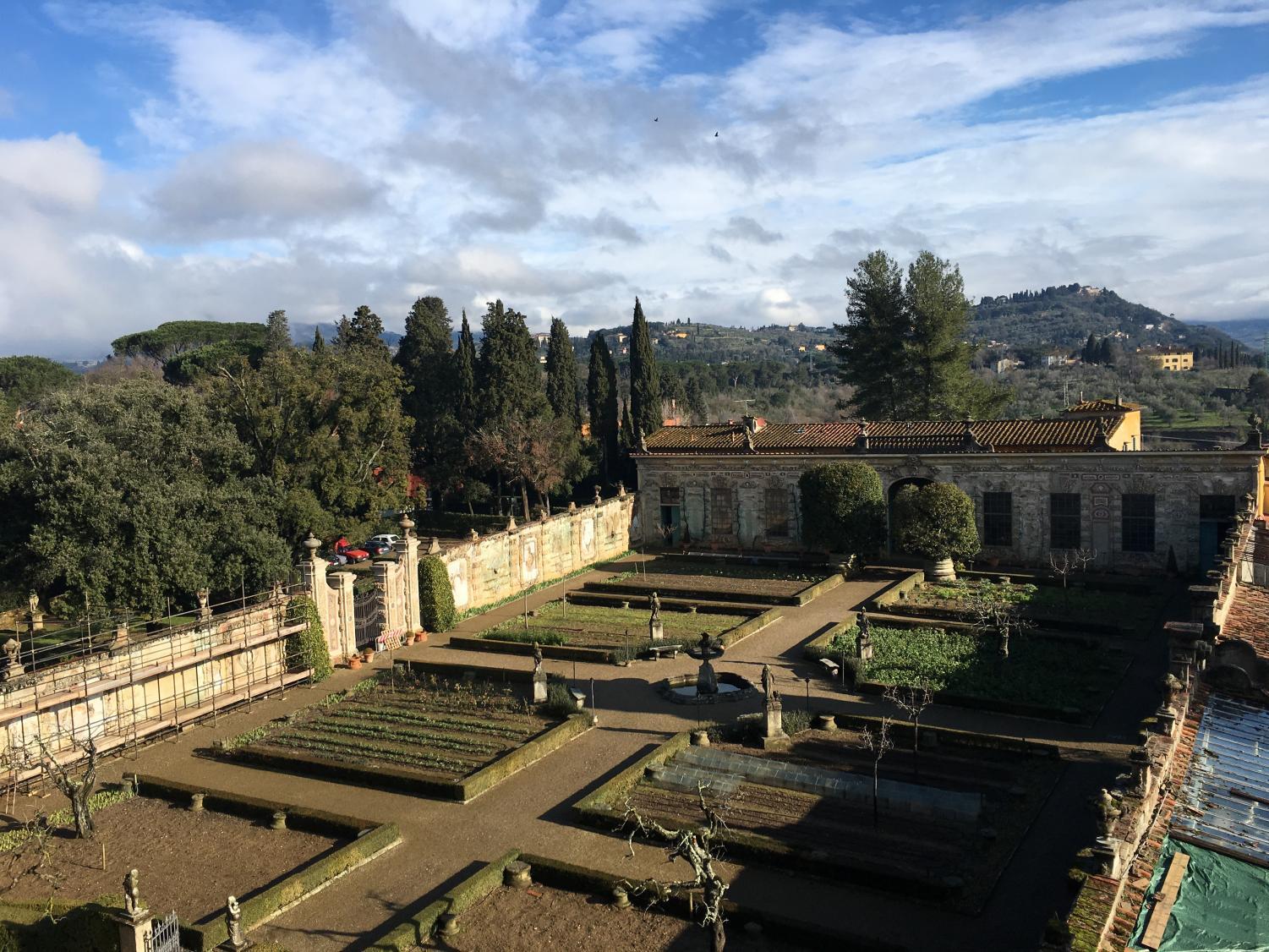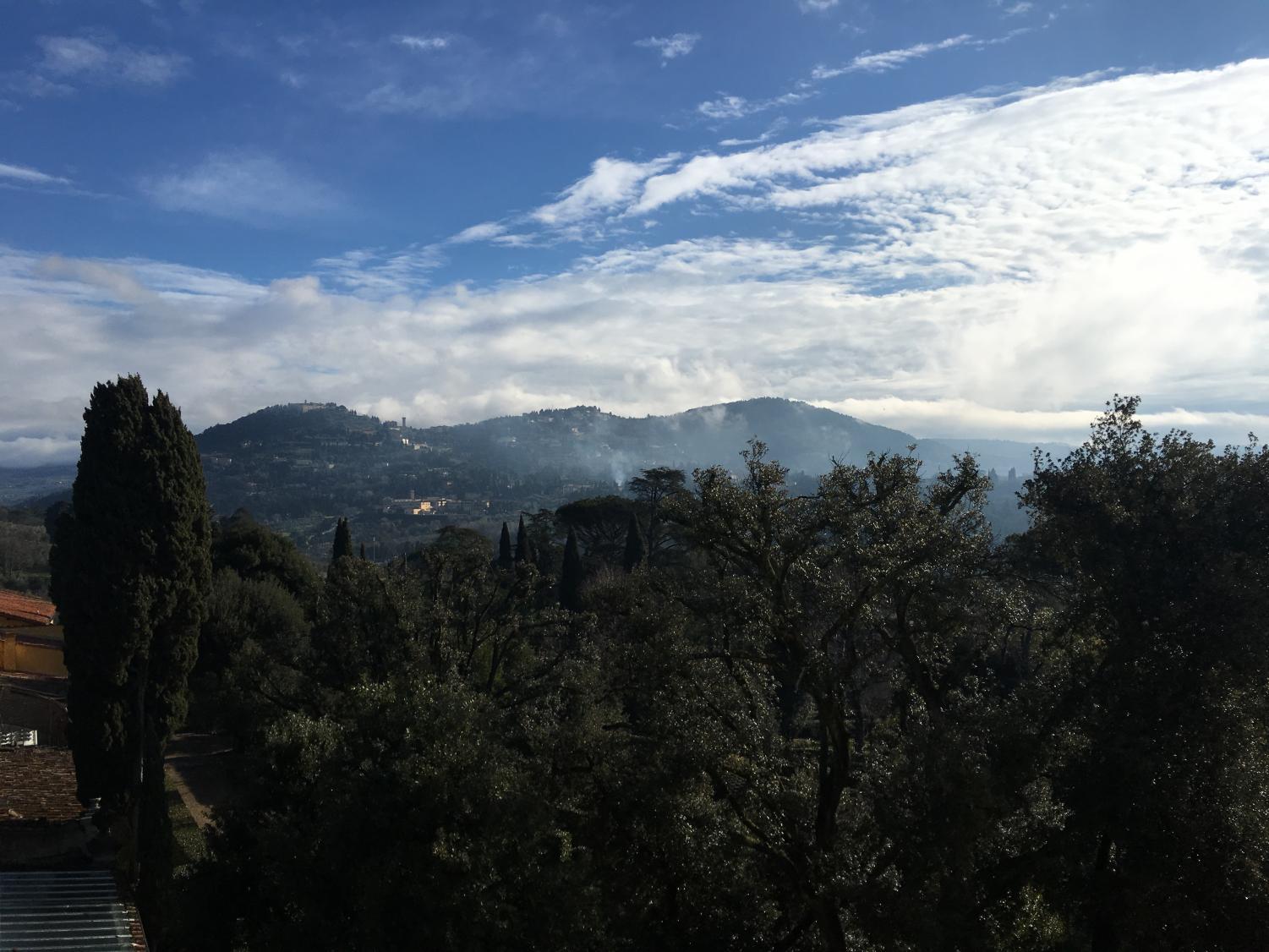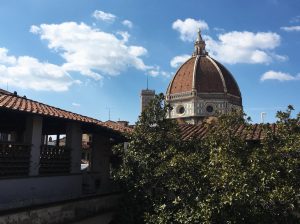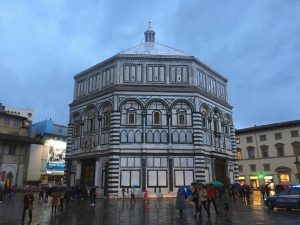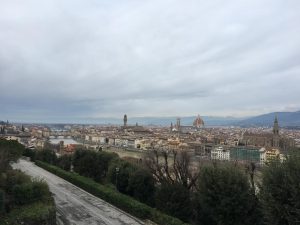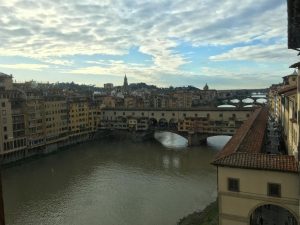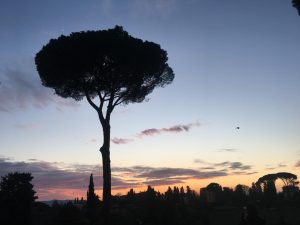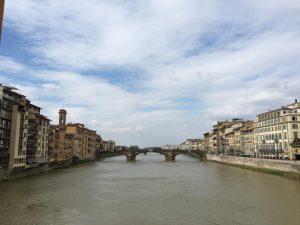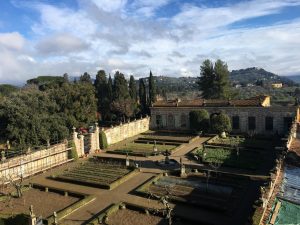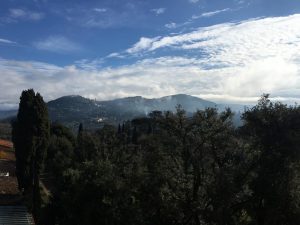Day in the Life: Florence
March 30, 2018
Benvenuti a Firenze! Birthplace of the Renaissance, home of the Galleria degli Uffizi and host of Michelangelo’s David. While Florence has a big reputation, the city is small — only 380,000 people call it home — but don’t expect just a bucolic scenery. Around nine billion tourists, over 22,000 times the city’s population, visit this city of flowers every year. If you ever miss New York’s craziness, I recommend you hang around Brunelleschi’s Cupula, or Duomo, on a Sunday.
A regular day in Florence starts at the city center, where most upperclassmen apartments, museums and tourist attractions are. This housing option does not include a meal plan, but the area is filled with supermarkets and good restaurants. Apartments house six to 13 people in either singles, doubles, triples or quadruples. Upperclassmen can also choose to live in a homestay. This is a great option if you want to immerse yourself in the Italian language and see the less touristy side of Florence, but your commute to class will probably take a bit longer. You’ll also have to be home by a time stipulated by your host family to have dinner, though you can let them know beforehand if you make other plans. First-year students live at either Villa Natalia or Villa Coletta and have a meal plan which includes a breakfast and dinner buffet. In their second semester, they can apply to live in a homestay.
After getting ready for the day and freaking out because I can see the Duomo from my window, I take the bus to class. I live eight minutes by foot from Piazza di San Marco, the most frequently used bus stop. NYU Florence is removed from the city center, so it’s a bit of a hassle to get there. Florence only has one method of public transportation, the bus, and it’s not the most reliable. Buses usually run a couple of minutes late, if they show up. They can also be overflowing with people, which is not ideal for a 20-minute ride. Since it’s getting nice outside, I’ve been walking more to and from campus to avoid this mess. The walk is around 40 minutes and it features beautiful, beautiful views, even though half of the way is up a hill. But, if you have class at 9 a.m., it’s a safer bet to take the bus.
NYU Florence has as big of a reputation as the city it resides in. After all, it’s the only NYU global location that has a campus. At first, it may seem strange to walk within a walled campus, but La Pietra is a sight to behold. It’s on the top of a hill, providing a beautiful panorama of Florence from almost anywhere. It’s also on the outskirts of the city (periferia, as you’ll learn), so the smell of freshly cut grass is ever-present and it’s common to hear birds singing on a walk to class.
The La Pietra campus was donated to NYU by Sir Harold Acton in 1994. La Pietra is composed by five villas: Villa Natalia, Villa Coletta, Villa Sassetti, Villa Ulivi and Villa La Pietra. Natalia, Coletta and Sassetti are separated from Villa La Pietra and Ulivi by the Valley of Death, a steep hill in the middle of the campus. It’s so steep no one ever walks through it without losing their breath, so I wish you good luck.
The Actons were not the original owners of the property. Villa La Pietra was built by Francesco Sassetti, an Italian merchant associated with the prominent Medici family during the Renaissance. Funnily enough, Aula Verdute at Villa La Pietra overlooks the Medici castle on the top of another hill. Nonetheless, today, Villa La Pietra is a house museum which students can visit on free guided tours. The collection belonged to the Acton family and has a wide range of artworks, including some seasonal expositions. La Pietra also has beautiful gardens that were restored to their original Tuscan grandeur and are maintained by attentive gardeners.
Villa Natalia is the most student-oriented villa, housing most first-year students, a common room, a small gym, the cafeteria and many administrative offices, including the Office of Student Life. Villa Coletta is another dormitory, which houses very few upperclassmen, but also has a couple classrooms and a meditation room. Villa Sassetti has more administrative offices — if you get a learning internship on campus this is where you’ll work — and Villa Ulivi is where you’ll have most of your classes. It also has a cafe with delicious coffee and pastries for very good prices.
Most classes at NYU Florence are once a week for around three hours. The courses are focused on the humanities and the arts, but there are some business and economics courses. If you are into Art History, Literature, History or Italian Studies in general, Florence is the perfect spot for you. I recommend taking one Art History course, as most of the classes meet at museums in the downtown area. Literature and History classes are also fun and they can help you better integrate into the city’s culture.
NYU Florence has a strict attendance policy. You are only allowed to have one unexcused absence without a doctor’s note, or your grade will drop significantly. This also extends to field trips which usually take place on weekends, and Friday make-up classes, so wait until you have all your syllabi in hand before booking any trips.
Florence is a hotspot for travelers. The city has fantastic restaurants, like the Trattoria Zà Zà, incredible artworks, like Botticelli’s “Birth of Venus” at the Uffizi and an agitated nightlife.
While navigating Florence’s many clubs and bars, like Jazz Club Firenze, you may be struck by some cultural differences. Italy is a country filled with machismo which translates into more aggressive and direct interactions between men and women. Consent is not well-defined. A lack of no or one yes is viewed as consent. Outside of clubs, catcalling and slut-shaming are more common than in New York. While Italian women are in a better social position than 100 years ago, there’s still a significant culture of female subjugation in Italian society.
Italy is also a majorly white country receiving a large flux of immigrants. This caused a rise in anti-European Union, protectionist and nationalist sentiment. There’s also a huge lack of diversity which may cause Italians to come off as racist and xenophobic. These cultural differences can be frustrating, but if you ever feel uncomfortable, do not be afraid to reach out to the OSL, a Peer Advisor or a friend.
Regardless, Florence is still a must-see. I have lived in very different places, from Northeastern Brazil to New York City, but I have never seen a city so proud of its culture and history. Every piazza has a story to tell — if you ever read George Eliot’s ”Romola,” there’s a chapter that takes place outside of La Pietra — and every street has its own beautiful details. The city is simply enchanting, and you won’t want to leave it any time soon. If you want to learn one of the most beautiful languages in the world, see precious artworks and eat delicious pasta, Florence is your place. And, I hope you will fall in love with it as much as I did. Ci vediamo a presto.
Email Carine Zambrano at [email protected].


























































































































































